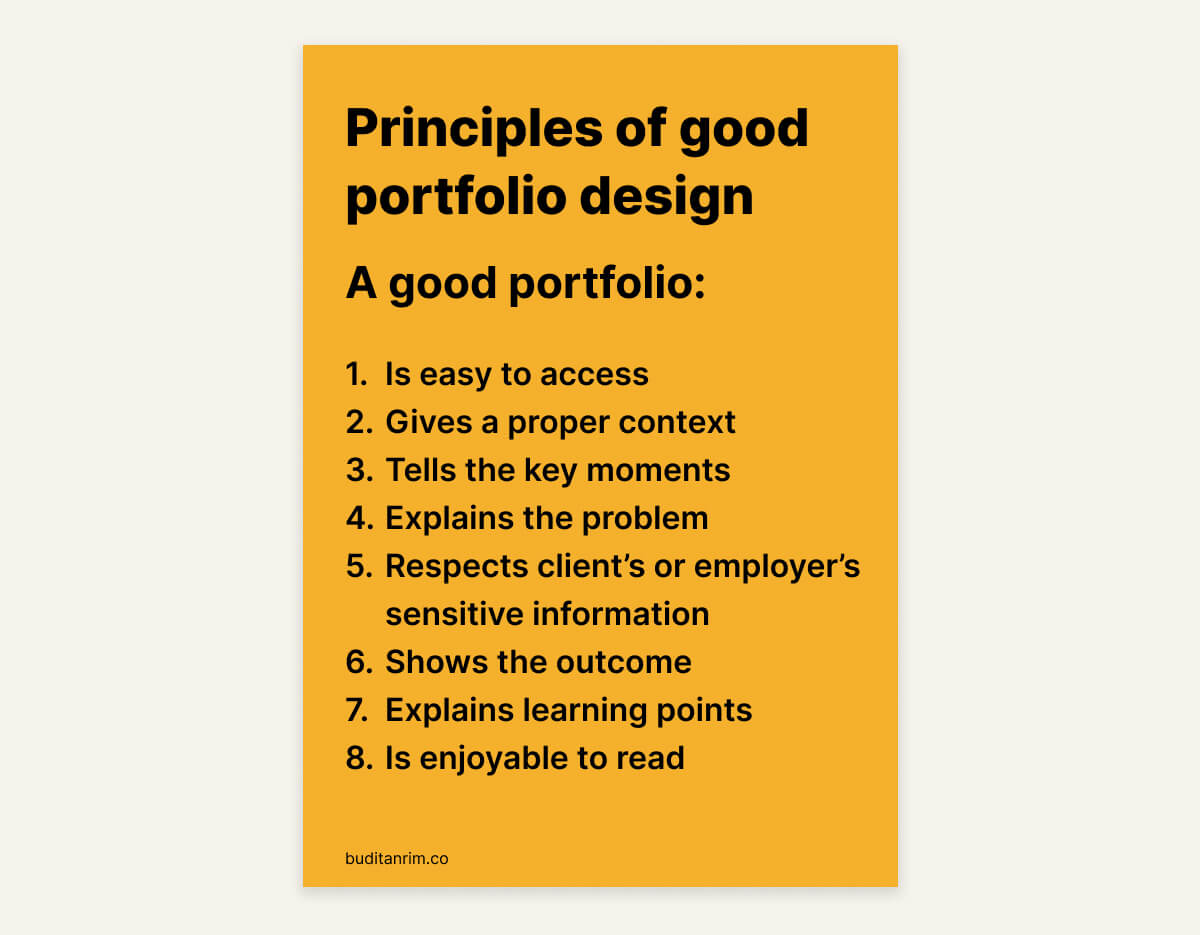Jan 09, 2021 | by Budi Tanrim
Principles of good portfolio design
What is the purpose of a portfolio?
For me, the purpose of a portfolio is to demonstrate my skills and previous impact through storytelling to help recruiters decide whether I’m the right fit for the potential role or not.
If you have the same intention, then these principles might be useful. A good portfolio…
-
Is easy to access. Recruiters have to look at hundreds of applications. The easier they can access your portfolio, the higher the chance they look to it. A simple click to a website will be ideal. But if you don’t have time to build one, consider making it as easy as possible; for example, a link to Google Drive contains your PDF. If you have multiple projects, you can add a suggestion which to read first.
-
Gives a proper context. Recruiters need to understand why this project has started and what’s your role. They will use this to assess whether you have the potential for the opening roles. Consider communicating that at the beginning of your portfolio.
-
Tells the key moments. Say no to lengthy paragraph. You should make it concise while help recruiters understand a few critical moments to the story. Your portfolio shouldn’t tell all the details. Remember, you can have that more detailed conversation during the interview. Show the key moments! Ask yourself: What am I trying to tell the recruiter in this section? Anything in this section that doesn’t help me communicate that?
-
Communicates the problem. The strong recruiters often want to see how well you articulate the problem. The easier recruiters can understand what problem you’re solving, the higher chance they’ll go through the rest of your portfolio. If the problem you’re solving is complex, consider use analogy to help people who were not involved in the project capture the idea.
-
Respects client’s or employer’s sensitive information. Even without NDA, you should consider not giving away some sensitive information that will harm your previous client or employer.
-
Shows the outcome. Don’t only shows the output like screens or end products. Tell the impact of your solution for user and business. That has a higher chance to convince the recruiter. Make sure you balance business metrics with qualitative customer feedback whenever possible! Because when revenue increased doesn’t always mean the experience got better.
-
Explains learning points. This is especially important when your project was not a success or you don’t have the outcome for any reason. Consider sharing what you have learned throughout the process. I can’t stress this enough. Many people want to hire a person who can grow.
-
Is enjoyable to read. The more enjoyable the story, the higher chance the recruiter will stick around for a bit. I will encourage you to reconsider any flashy things that will not contribute to the reading experience. Remember, recruiters primarily scan and read.

P.S. Yesterday I published a new porftolio where I share a story how we scale our Human-Centered practice in Bukalapak. You can check it out: Scaling human-centered practice.
Hi, this blog is no longer active. I move to substack. You can subscribe below or go to newsletter.buditanrim.co



